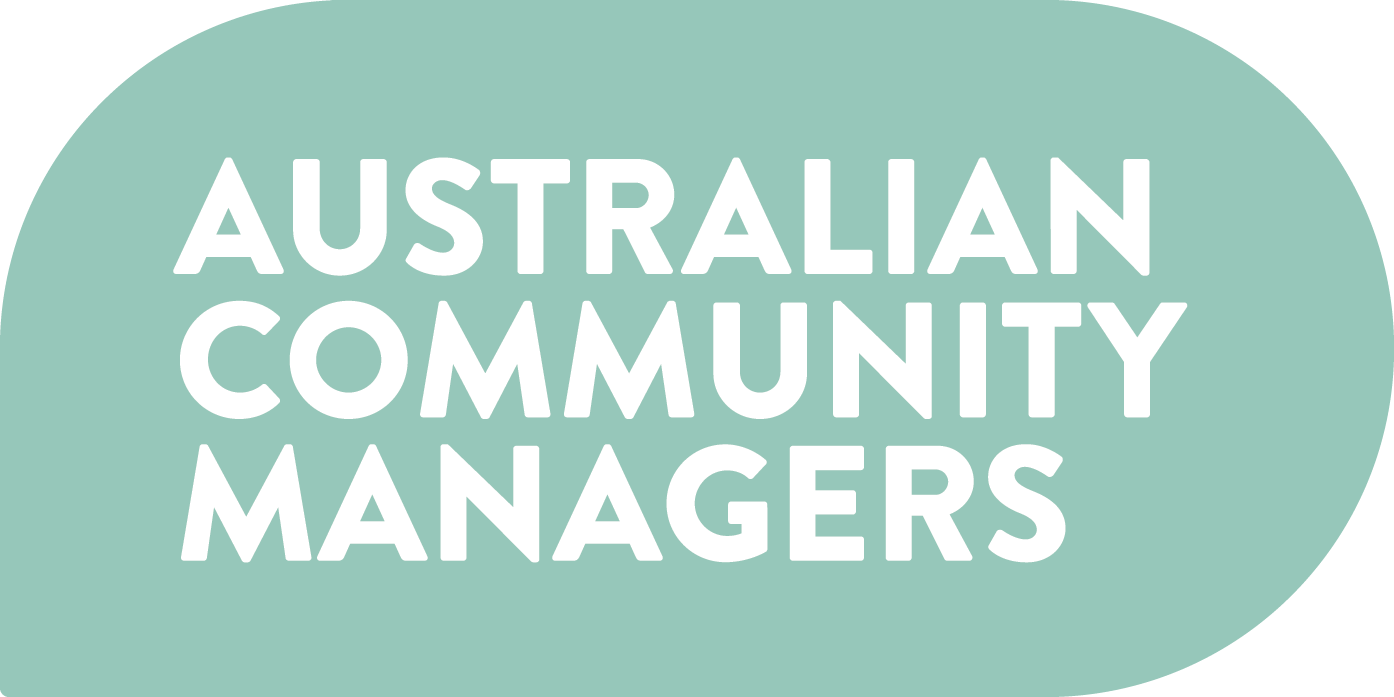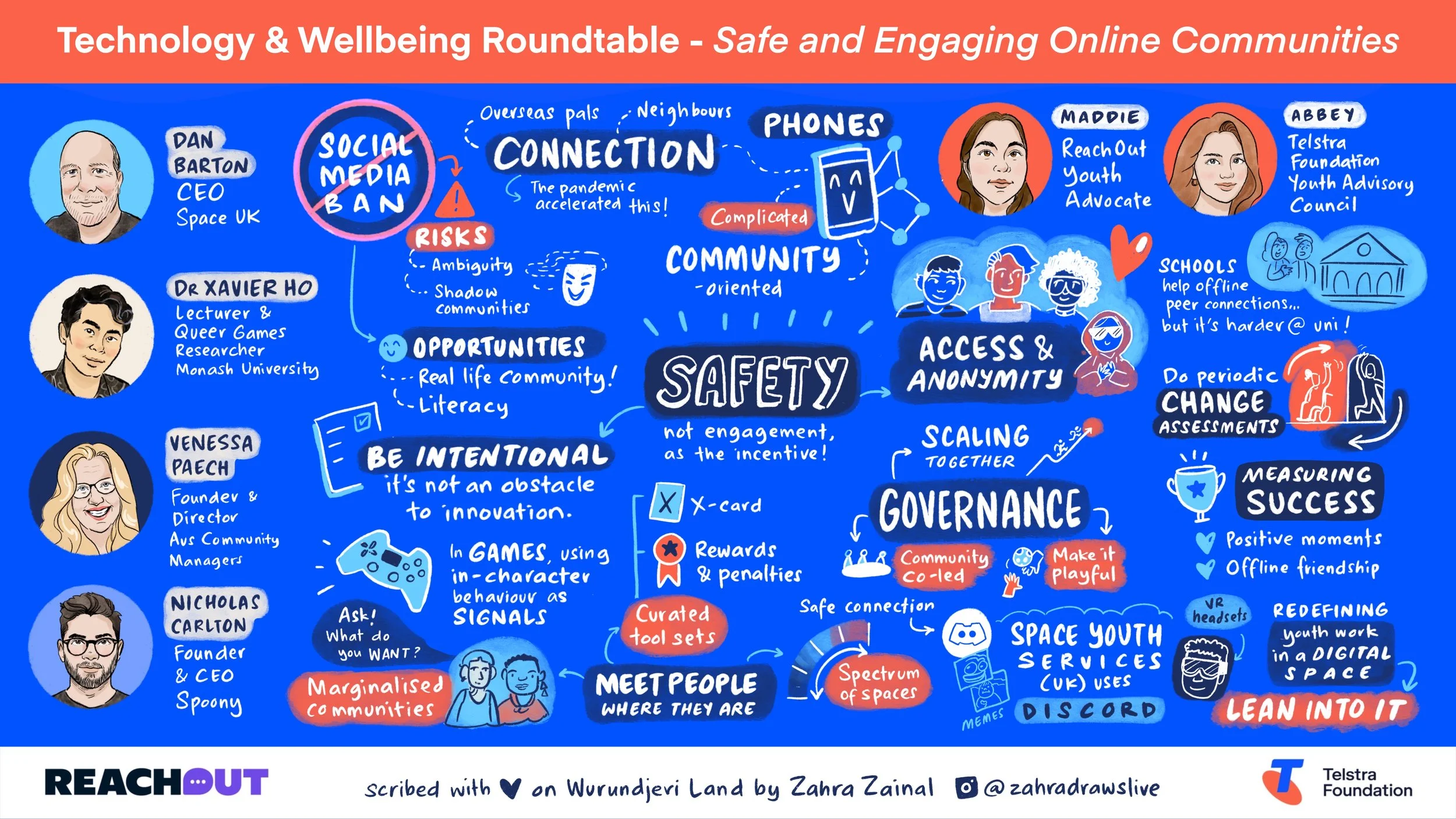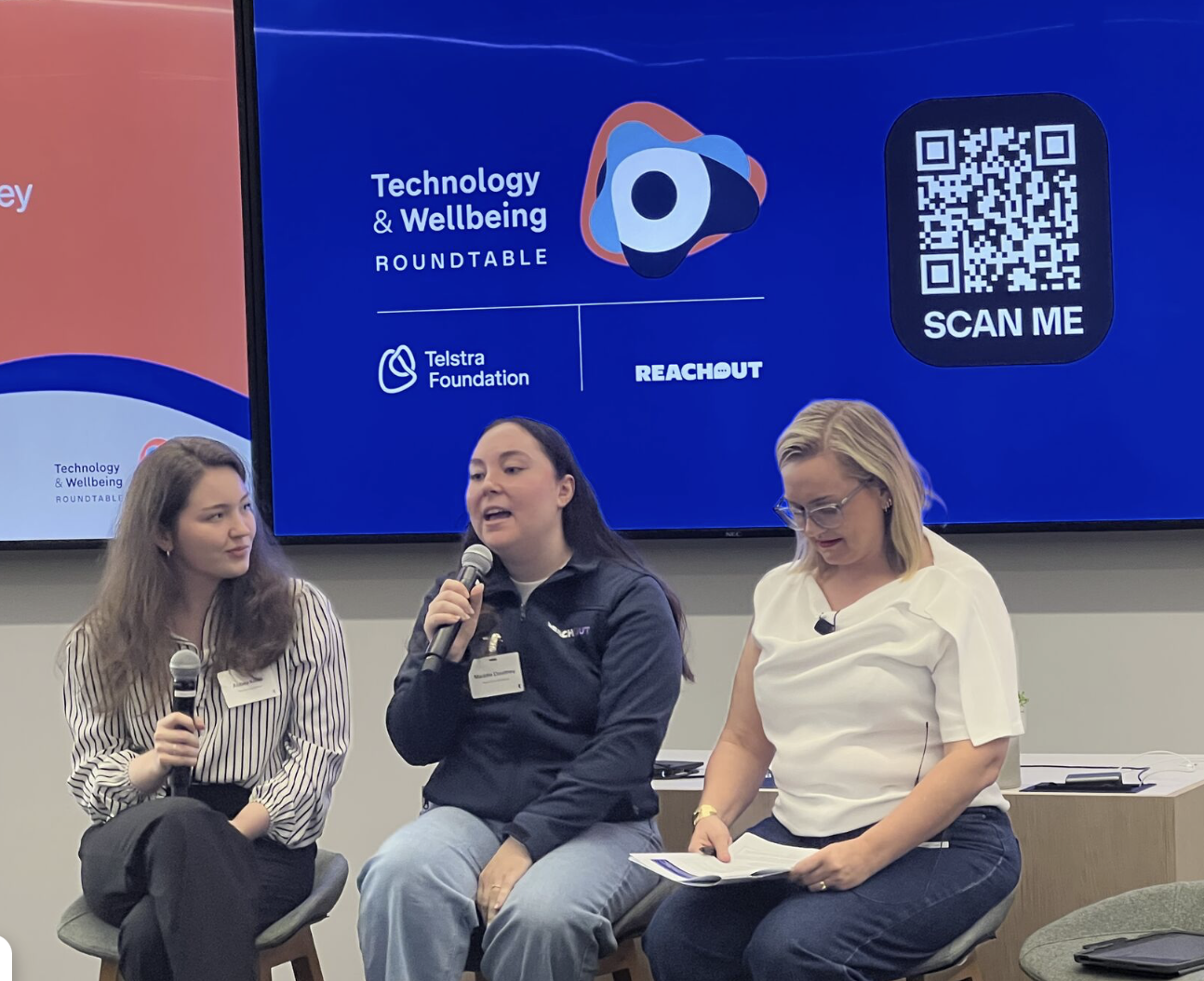Reclaiming Online Communities for Young People: Beyond Social Media
Building online communities to serve young people today requires a thoughtful and intentional departure from traditional social media. While centralised social media platforms dominate digital interactions and our discourse, community builders understand a crucial distinction: community is about relationships, not platforms. Simply existing on social media does not equate to genuine community-building.
This core idea - and how we address it - was the centre of discussion at a recent Technology & Wellbeing Roundtable, co-chaired by Telstra Foundation and ReachOut Australia, and featuring ACM Director Venessa Paech.
Industry leaders, academics, and youth advocates came together at the gathering to discuss how we can all effectively create supportive and safe digital spaces, particularly for young people in the wake of the new Australian Government social media ban for under 16’s.
Venessa joined the stage with fellow guest experts, Dan Barton - CEO of Space Youth Services UK, who build online and offline hubs for belonging and peer support; Dr. Xavier Ho - award-winning design researcher from Monash University focusing on the queer independent games community; and Nick Carlton - CEO of Spoony, a new social platform for chronically ill Australians.
Here are some of the key takeaways from the conversation:
1. Social media does not inherently foster community
We must dispel the common misconception that social media inherently fosters community. Most social media platforms, in their current design, prioritise engagement metrics over meaningful relationships. Community builders must reclaim their focus from these large-scale, often impersonal platforms towards intentional, purpose-driven digital spaces that truly centre the needs and safety of young people.
2. Intentional design and safety as core principles
Safety must be deliberately embedded into community design from the start. Digital spaces don’t become safe by proclamation alone; they require clear governance and structured moderation practices. Incorporating curated toolsets, clearly defined rewards and penalties, visible role-modelling, and diverse techniques (including, for example, the X Card from the tabletop roleplaying games community). Nuanced governance models will ensure safety and allow authentic engagement.
Safety-first design doesn't stifle innovation, but guides it.
3. Small communities, big impact
Scale matters profoundly in online communities. The most effective digital communities are typically smaller, ‘cozy’ groups clearly aligned around shared values and purpose. Attempts to scale without thoughtfulness and community management expertise can fracture social and cultural cohesion, undermining both safety and effectiveness.
Instead, community builders should foster ecosystems of smaller, interconnected communities. Each unit remains manageable, impactful, and cohesive, collectively contributing to a larger, vibrant network.
4. Leveraging AI responsibly
Artificial Intelligence (AI) can be an ally for community builders and moderators, especially in ensuring digital safety. AI tools can automate repetitive moderation tasks, filter harmful or graphic content, and gather insightful data to empower community leaders. However, human oversight remains critical - AI enhances, rather than replaces, the human touch at the heart of every community.
5. Listen, engage, and respond authentically
Actively engaging with marginalised and underrepresented young people is non-negotiable. Community managers should proactively seek feedback from their communities about their needs, interests, and challenges. Understanding these nuances helps create spaces where everyone feels genuinely seen, respected, and supported.
6. Rethinking youth work digitally
Organisations like Space Youth Services (UK) have demonstrated success by thoughtfully selecting platforms tailored specifically to community needs (such as Discord) rather than defaulting to mainstream social media. These spaces provide a model for how digital youth work can evolve: co-created, community-driven, and purpose-built.
7. Measuring what truly matters
Finally, community success should be measured not just in metrics, but through meaningful human outcomes: positive interactions, offline friendships developed, and genuine personal growth. Periodic community assessments help maintain alignment with core values and goals.
Where to - after the social media ban?
The new Australian social media ban for under 16s, while unhelpfully ambiguous in many respects, can be an opportunity to wean ourselves from the negative effects (and unquestioned reliance) on platform monopolies of the past decade.
It’s possible to reclaim digital spaces for genuine connection and community, particularly for our younger generations. Online community builders and stewards have a powerful role to play in shaping and supporting this rebalancing - championing intentionality, safety, and authentic relationships above superficial engagement metrics, and leading the way in working with alternative, decentralised and independent technologies.
Our thanks to the teams at the Telstra Foundation and ReachOut Australia for organising this important event, and in particular to the youth representatives that took time to share their insights and experiences.




